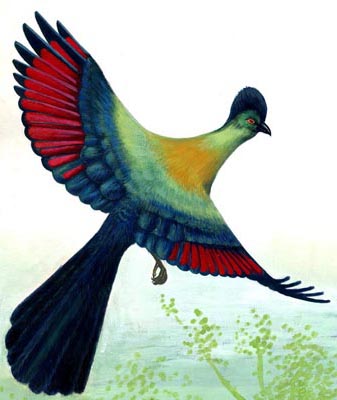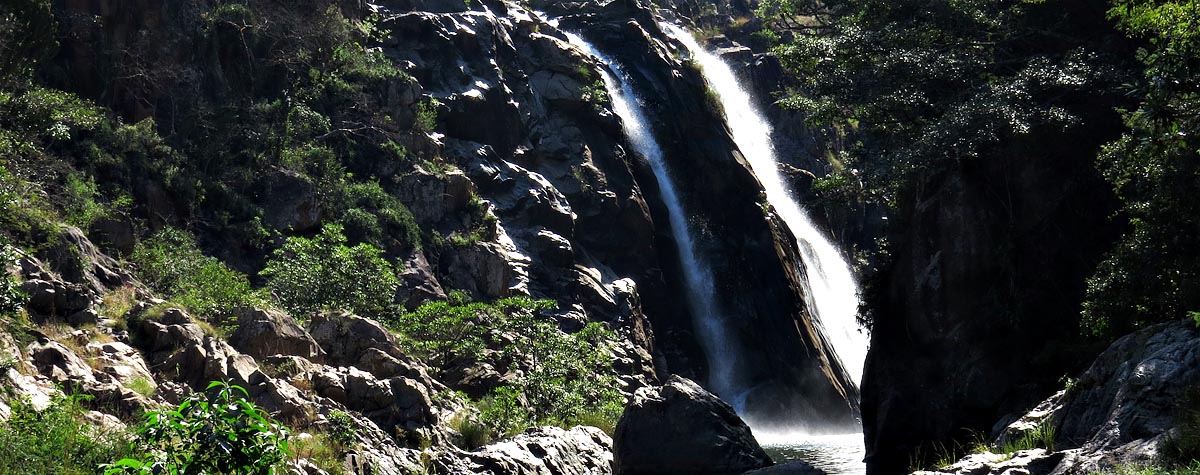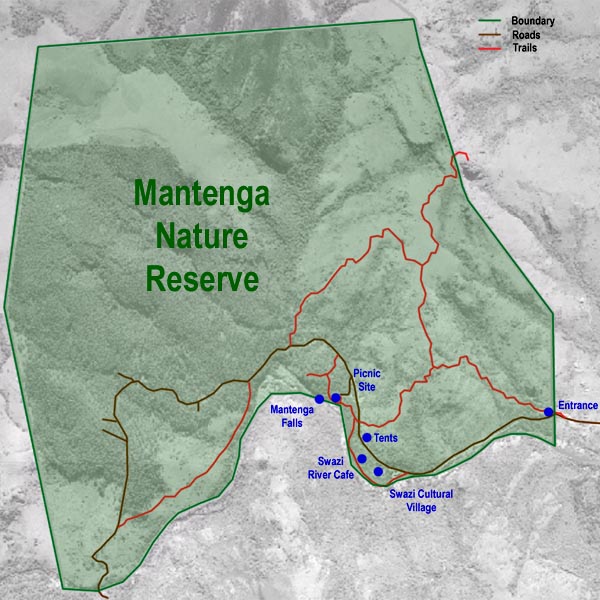The ENTC now has a new website, at www.entc.org.sz
Our logo is adapted from a painting by Phillip Dlamini, 1998, of a purple crested turaco. In traditional Swazi dress, the red feathers feature in the royal headdress, so this bird illustration is not only a symbol for wildlife conservation, but also of cultural heritage.



The reserve is a small protected area of 725 hectares in a secluded corner of the Ezulwini Valley, although it is only two kilometres from a major road. The Little Usuthu River (Lusushwana) forms the southern boundary of the reserve; over this rivier are commercial pine forests and Mlilwane Game Sanctuary. To the north and west is Mlilwane North (a protected area but not open to the public), and a residential area is on the eastern side.
The various portions making up Mantenga were purchased by the Swaziland National Trust Commission between 1979 and 1994. In the latter year work began on infrastructure.
The reserve is made of combination of middle and high veld habitat, and one third of the reserve is covered by Eucalyptus (gum) forest. The middleveld habitat is dominating the low lying areas along the Little Usuthu River, flowing approximately 4km along the southern boundary, while the highveld habitat is mostly found on the areas of high altitude like the Luchoncho, Sibumbu and Lugogo mountains.
The Mantenga Waterfalls are Swaziland's best-known falls, and the largest in terms of volume of water (95m high). This is despite the construction of the Luphohlo Dam some 15 km upstream, where water was diverted for electricity generation.

Despite Mantenga's small size, a large number of medium-sized mammals are flourishing there. There are vervet monkey and baboon, bushpig and porcupine, otter, rock dassie and bushbaby. One predator that has been sighted is the serval; leopards are possibly present. Buck include kudu, nyala, klipspringer, grey and red duiker.
Birdlife abounds, including the endangered bald ibis.
Top ten common bird species at Mantenga
The reserve is thickly forested: indigenous trees of note are the waterberry ("umncozi") with its small black edible fruit, kiaat ("umvangati") and Combretum molle ("imbondvo lomnyama").
Our Contacts:
Head Quarters: (+268) 2416 1489/1179
Email: info@sntc.org.sz
King Sobhuza II Park: (+268) 2416 1489/1179
Email: ksmp@sntc.org.sz
National Museum: (+268) 2416 1489/1179
Email: curator@sntc.org.sz
Copyright © ESWATINI NATIONAL TRUST COMMISSION
Malolotja Nature Reserve: (+268) 2444 3241 / (+268) 2416 1480
Email: culturalvillage@sntc.org.sz
Mantenga Nature Reserve and Swati Cultural Village: 2416 1151/1178
Email: culturalvillage@sntc.org.sz
Mlawula Nature Reserve: (+268) 2383 8885 (Reception)
(+268) 2383 8453 (Senior Warden)
Email: culturalvillage@sntc.org.sz
Magadzavane Lodge: (+268) 2343 5108/9
Email: magadzavane@sntc.org.sz